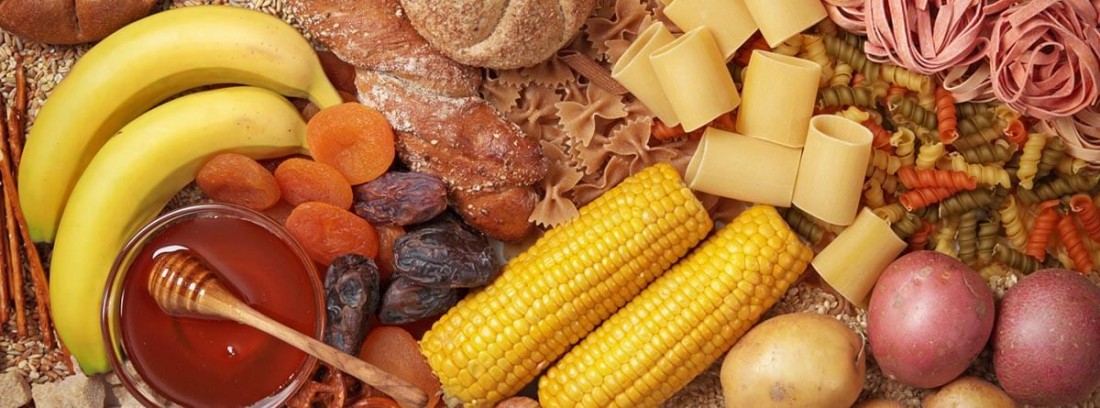Carbohydrates for before a marathon!

After reaching the large volume of training necessary to face a marathon, the runner should consider a change in nutritional strategy the week before the big event in order to face it with more guarantees of success.
What are glycogen stores?
We know that in endurance sports such as a marathon the body obtains energy through aerobic metabolism using glucose, fat and, to a lesser extent, protein as energy pathways. Glucose is stored as glycogen in the liver and muscles and is the most accessible and efficient form of energy we have, but it is limited. Thus, when glycogen stores are depleted during the race is when the runner encounters the dreaded "wall". In this situation the body is forced to obtain energy mainly from the fats, metabolically less efficient and significantly impairing the pace and speed of the race. Therefore, how much The higher a runner's glycogen stores will later be depleted and later it will arrive at the “wall”.
Before any reference to health, training, diet ... of the athlete, it is important to have the recommendation of a specialist. If you are a member of, you have a free account with a team of experts in different medical specialties. So if you are thinking of doing a marathon, it is best to consult a sports doctor, in this way, they can advise you personally, by email, video call or in person and avoid unnecessary risks.
What is carbohydrate overload?
Proposing to do an overload or super compensation the week before the marathon is an interesting nutritional strategy whose objective is to fill the maximum muscle glycogen depot in order to delay the onset of fatigue.
Previously, an initial phase of depletion of the glycogen store was carried out by means of a minimal carbohydrate intake followed by another phase of abundant carbohydrate consumption. Currently it has been seen that the replenishment of muscle glycogen is equally effective without the need to perform the emptying phase that usually causes great fatigue to the athlete, and increases the risk of suffering, so a modified protocol is followed that consists of progressively increase carbohydrates as you decrease the intensity and volume of your workouts.
Plan it well and personalize it
It is convenient to plan a personalized pattern for the four or five days prior to the test by gradually increasing carbohydrates around 9-12 g / kgof body weight per day approximately. Above all, through complex carbohydrates that do not cause high blood glucose peaks. The complex carbohydrates are commonly found in:
- fruit,
- vegetables,
- cereals such as rice, oats, wheat, rye, millet and derivatives such as bread, pasta ...
- ,
- vegetables such as carrots, potatoes, cassava, sweet potatoes, dried fruits, flours, molasses, honey ...
Since it supposes a significant increase in hydrates during the day, it will have to be supplemented by food in liquid or semi-liquid form through juices, smoothies, purees ... to provide more carbohydrate density in less volume and make it more digestive.
It is also important to note that the runner should not be left with a feeling of discomfort or bloating, but will always have to personalize and adapt based on individual tolerance, finding out which foods are most convenient for each one.
Diet example
As a guide, this is an increased carbohydrate proposal that could serve for a weekly glycogen overload. prior to a marathon:
Breakfast:
- Orange and mandarin juice (2 oranges + 2 mandarins).
- Semi-milk bowl with 3 heaping tablespoons of granola and banana slices.
- 1 sliced bread toast (30 g) with applesauce and cinnamon.
Midmorning:
- 35 g of mix of fruit and nuts.
- Piece of fruit.
Meal:
- Sweet potato puree with pumpkin and seeds.
- Basmati rice with vegetable and chicken curry.
- Fruit salad with raw honey.
Afternoon snack:
- Milkshake: fresh cheese beaten with 3 tablespoons of fine oat flakes and fresh pineapple.
- Turkey sandwich (2 slices of bread).
Dinner:
- Couscous salad with raisins.
- Baked sea bass with potato and roasted carrots.
- White yogurt with 2 tablespoons of homemade red fruit jam.
Alessandra huerta
(Updated at Apr 13 / 2024)